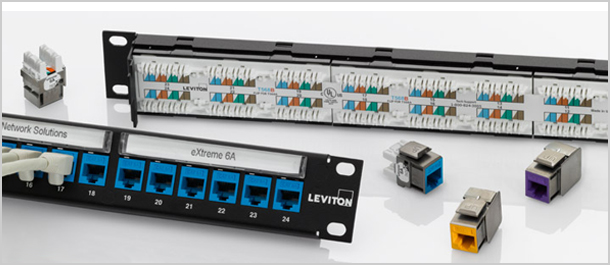Making the Most of CAT 6A

So, you’re starting to install CAT 6A. Congratulations! I bet you’re saying, “Man, this cable is huge!” (and heavy). In fact, CAT 6A cable has about a 50% larger outside diameter (OD) than your average CAT 6 cable, and is more than twice the weight. Of course, CAT 6A’s amazing performance benefits outweigh any perceived drawbacks, and 6A installations are only becoming more and more common. Make those first projects easier with some tips and tricks to help streamline design and installation.
First, you’ll need to know how best to work with the cabling. My advice:
- Most 6A cable typically comes on large reels, so be prepared with an appropriately-sized rack or cart
- Cable runs require more space for larger trays and conduit as well as bend radius and slack loop requirements
- To prevent crushing of lighter-weight cables, position 6A cable on the bottom of cable trays and limit bundles to 50
- Use stronger, properly-sized anchors, threaded rods, and J hooks
- Space supports randomly between three and four feet apart to prevent sagging
Well-organized racks and cabinets are essential. Angled panels, narrow-plug SlimLine patch cords, and symmetrically distributed cable bundles will all help reduce cable congestion. In the work area, allow extra depth behind faceplates and at directional changes. Oversized junction boxes and extended-depth surface mount housings can help here as well.
The larger cable OD, tight twist rate, and thicker conductor insulation make termination a little challenging. Punching down one pair first will help you align the remaining pairs more easily. Leviton CAT 6A connectors include pair separation towers, which will also help get the wire pairs into position.
A word of warning: If you’re installing in a data center, you’ll need to take some additional factors into account, including air-handling requirements, short-link performance, and aesthetics. Leviton CAT 6A components help address many of these special issues.
CAT 6A adds Alien Crosstalk (AXT) tests to the familiar roster of test requirements. These tests are time-consuming; budget extra test time into your bid. Perform permanent link or channel tests for all installed drops with an industry-recognized UL Level 4 field tester capable of testing to 500 MHz. A two percent sample is typically recommended for AXT testing. Test the longest cables for the most meaningful results.
Download your free copy of the Leviton Network Solutions CAT 6A Reference Guide at leviton.com/cat6a.


